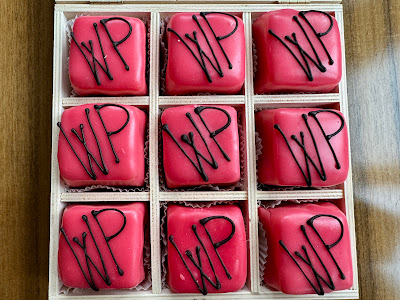Firenze, Italy 5
The inside was bright with the morning light through the large stained glass windows. The chancel as well as several family chapels at the east end of the church were beautifully frescoed. There are 16 family chapels in the church. Wealthy families built and decorated chapels in their honor and dedicated to a favorite saint. The Medici family was one of them, of course.
The Sacristy with well-preserved frescoes and original 14th-century furnishings give you a better idea of how the entire church would have looked in the 14th century when its interior was completely covered with paintings.
Michelangelo's tomb was also found in the church. He was born in a small town in Tuscany, worked and left some of masterpieces in Florence although he spent the last three decades of his life in Rome. When he died in 1564, Duke Cosimo I de’ Medici moved his body from a church in Rome in order to honor him in death with a proper funeral and tomb in Florence because Cosimo I didn't have a chance to employ and honor Michelangelo when he was alive. The body transfer was secretly done so that anyone in Rome, including the Pope, couldn't stop it. What would Michelangelo think about the movement?
The museum is famous for its collections of ancient sculptures, ancient statues and busts from the Medici family, and paintings from the Middle Ages to the Modern period, notably masterpieces from the 14th century and Renaissance period. For example, 'Primavera' and 'The Birth of Venus' by Sandro Botticelli,
'The Annunciation' and 'The Adoration of the Magi' by Leonardo da Vinci,
'The Doni Tondo' (or 'Doni Madonna') by Michelangelo,
'The Diptych of Federico da Montefeltro and Battista Sforza' by Piero della Francesca,
and Medusa by Michelangelo Merisi da Caravaggio.
It was a great opportunity to see the outstanding collections in person. I just wish to be there without people. Anyway, it was lunch time! We came back to La Buchetta with J's relatives. J and I shared Gnocchi 'Angeli e Demoni' and Straccetti di Pollo alla Buchetta.
Homemade gnocchi cooked with stracciatella cheese, finished with a touch of red spicy sauce, crispy guanciale, aromatic herbs and edible flowers. The dish was delicious. I guess the pillowy gnocchi were "angels" and the spicy sauce spots were "demons." Somehow I found multiple demon spots in my share. The chicken dish was tender chicken breast strips with creamy mustard sauce, asparagus and edible flowers. It was very tasty, too. The restaurant became definitely our favorite in Florence.
After the lovely lunch, we visited Museo di Casa Martelli alone. Located near the Duomo, the museum welcomes you to the house of the Martelli family, one of the Florentine noble families and shows the heritage of the old family though guided tour for free.
The house had been the residence of the family since the early 18th century until the last descendant Francesca Martelli passed away in 1986. She, who didn't have an heir, left her fortune to the church. Later the house was sold to the Italian State and opened as a public museum in 2009.
The interior were decorated with the Martelli's collection of paintings and furniture from the 17th and 18th centuries. The ceilings were covered with frescoes, some of which narrated the story of the family. The rooms, which were renovated but kept the taste of the time, were kinda small and dark but intimate.
The buildings at the center of Florence doesn't have enough space for a garden. The Martelli's house wasn't an exception. They turned a couple of rooms on the ground floor into patio/garden by painting plants and garden decors on the walls and ceilings. Picnic in a virtual garden at home must have been a luxury back then.
We walked around in the city more. We still had a couple of hours until dinner.
We met J’s relatives at a restaurant called Trattoria Marione, another restaurant that our B&B host recommended for a traditional local cuisine. The restaurant was very popular. When they opened the door for dinner, the tables were quickly filled.
I wasn’t really hungry due to the rich lunch. I had tortellini in broth. It was light and simple. Just what I needed. J ordered Angello e Carciofi fritti (fried lamb and artichokes) from the day’s special menu. I think he enjoyed it. It was the last evening with J’s relatives. It was wonderful meeting them up in Europe again. Please come back to Europe next year so that we can spend time together!
To be continued…







































